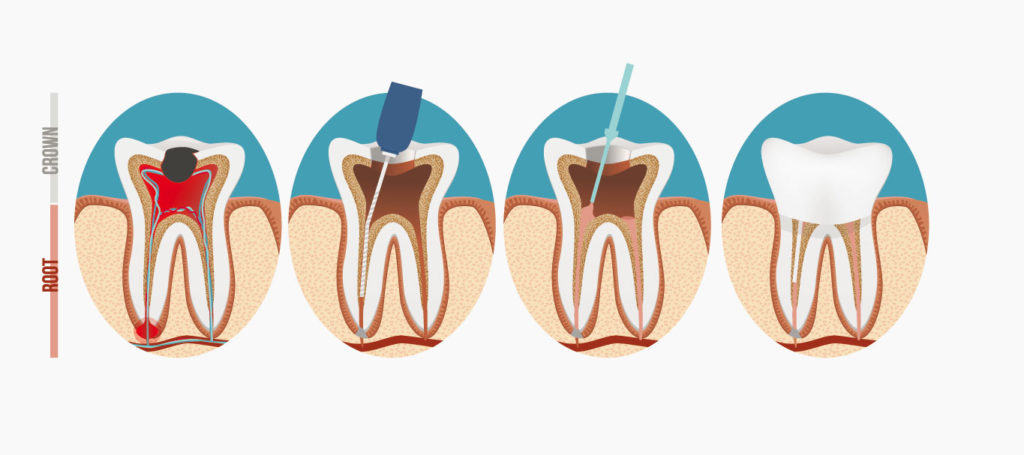Endodontics
by Dr. Daniela Politi
A deep caries or trauma can affect the pulp of the tooth, inflaming it or causing it to go into necrosis: in this case it is precisely the nerve fibers present in the pulp that give that annoying localized hypersensitivity to heat and cold or what is often called throbbing pain.
Through root canal treatment, the dental pulp is removed, preventing the inflammation from giving rise to an abscess or granuloma. The surgery is performed under local anesthesia.
To perform proper root canal care, it is necessary to access the root canals in order to cleanse, disinfect and enlarge them. It is necessary to know the exact anatomy of the tooth to be treated, so an X-ray image is required.
Technology is of great assistance through the apex detector, a sophisticated device that signals, in the dental canal, the depth of the apex. After a root canal, the crown of the tooth must be restored: the latter, in fact, deprived of the nerve, inevitably becomes more delicate, easily subject to trauma and breakage.
For this reason, the devitalized tooth is “sealed and made robust”; That is, a classic reconstruction is carried out with a fibre pin and composite material. These are biocompatible materials, which avoid the risk of any bacterial infections and inflammation of the treated area. The devitalized and encapsulated tooth has the strength and robustness of a natural tooth!


